Løkken Sculpture Trail
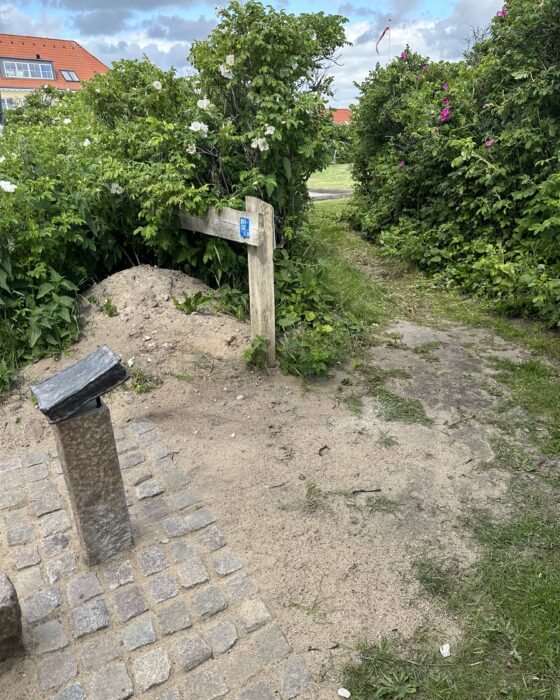
Løkken Sculpture Trail – a part of the Art Trail
“We are proud to expand the Løkken Art Trail with even more art in the summer of 2024. The ‘Løkken Sculpture Trail’ is an addition to the Art Path – another trail within the trail.”
The Sculpture Trail adds 17 new sculptures to the route created by sculptors and sculptors from both Denmark and abroad. These new works, like Lise Vestergaard’s murals interpret the UN’s 17 World Goals.
The 17 new sculptures are located in various places along the 6 km long route and all fixated on beautiful granite columns. Our hope is that these works give the whole family the opportunity to reflect on the challenges we face in regards to the climate, achieving peace and the Challenge with the environment. We also hope that they will contribute to an even more joyful time in beautiful Løkken.
The project was realized through support from Spar Nord Bank’s “Det Lokale Løfte.” Sponsors also include Villa Vendel B & B, XL Byg Tømmergården Løkken, Sol og Strand’s “En Lokal Håndsrækning” and Feriepartner Løkken.
The 17 global goals at Løkken Sculpture Trail
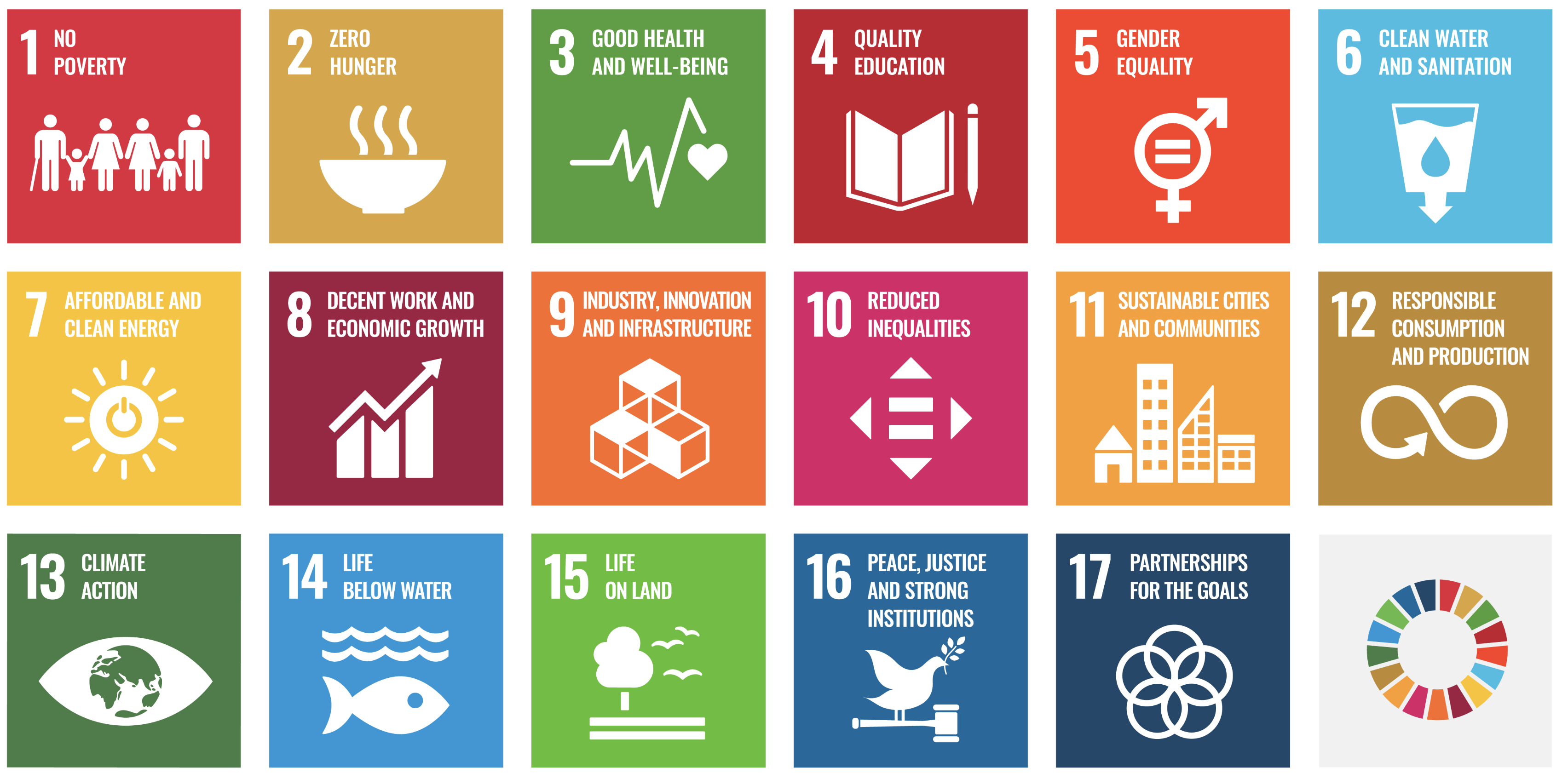
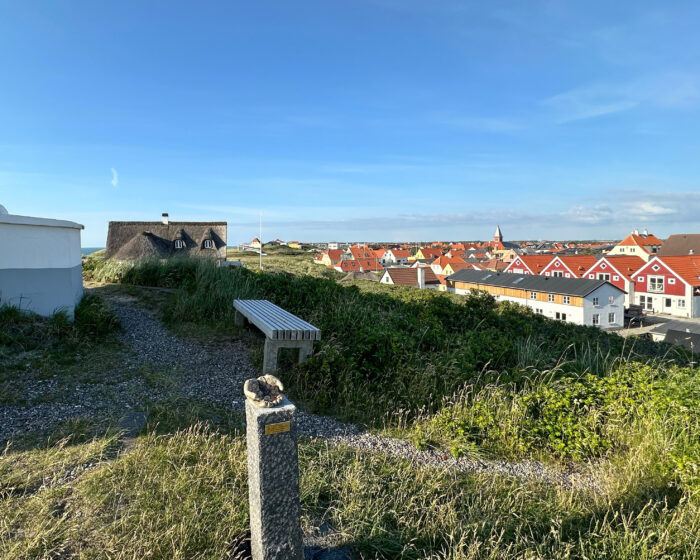
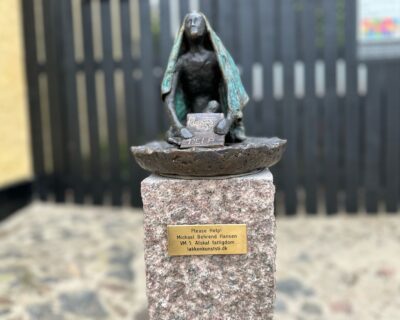

“Please HELP” by Michael Behrend Hansen
The eradication of all forms of poverty remains one of humanity’s greatest challenges. While the number of people living in extreme poverty has halved – from 1.9 billion in 1990 to 736 million in 2015 – far too many still struggle to meet their most basic human needs.
Source: UN Global Goals.
ABOUT THE ARTWORK:
Michael Behrend Hansen has portrayed a fellow human being in patinated bronze – a beggar squatting with a sign and requesting help because we are not alone in the boat. In other words, we are in the same boat that no one should live in poverty and that we can all end up in poverty if we don’t help each other. The individual person is depicted in the big world picture.
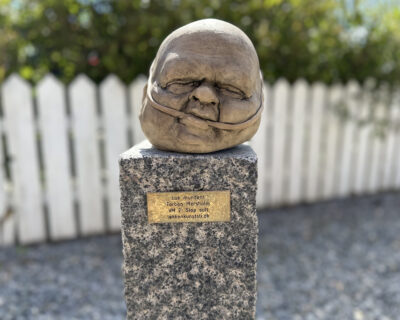
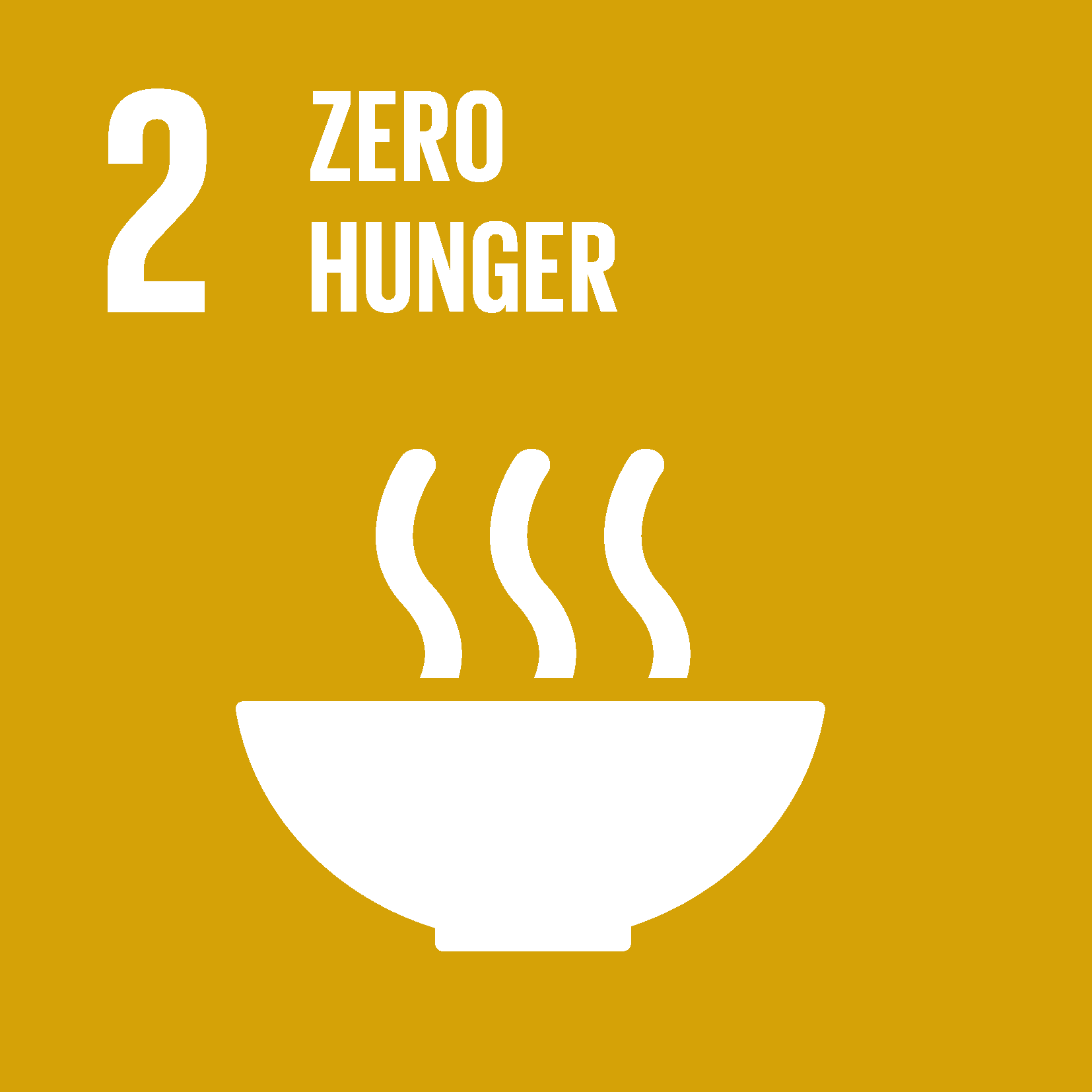
“Close you Mouth!” by Torben Mersholm
795 million people are estimated to be chronically undernourished in 2014. This is often a direct consequence of environmental degradation, drought and loss of biodiversity. Over 90 million children under the age of five are dangerously underweight, and one in four inhabitants of Africa still go to bed hungry.
Source: UN Global Goals.
ABOUT THE ARTWORK:
Torben Mersholm’s work is perhaps an adult chubby person with a rubber band in his mouth. This with the thought that if we all ate only what we needed – then there would be less hunger and less crisis compared to an underweight person in the third world. In other words, a vote against overeating and that we all must share.
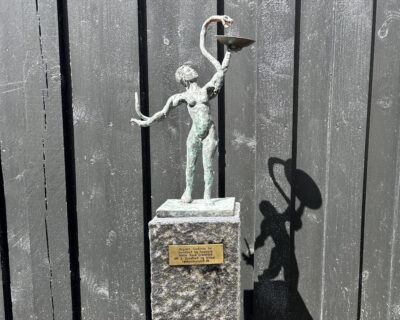

“Hygieia, Goddess of Health and Hygiene” by Helle Rask Crawford
Since the adoption of the 2015 goals, historic results have been achieved in reducing child mortality, in improving maternal health, and in combating HIV/AIDS, malaria and other diseases. The goal is to spread universal health insurance and provide access to safe and effective medicines and vaccines for everyone.
Source: UN Global Goals.
ABOUT THE ARTWORK:
Hygiea IV, made in Bronze, copper, enamel. The development of medical science has made it possible for people to live longer, better, healthier lives. Hygiene, vaccination, penicillin, pain-relieving medicine, medical obstetric care are some of the milestones in the history of medicine. Understanding the need for clean and sterile treatment is extremely important to avoid infections. The ancient Greeks were already aware of hygiene.
Hygiea is the Greek goddess of health and hygiene. She is the daughter of the god of medicine, Asclepios, whose snake coiled around a staff symbolizes medical science. From ancient times to the present venom from snakes has been used in medicine. Here Hygieia drains poison from the snake.
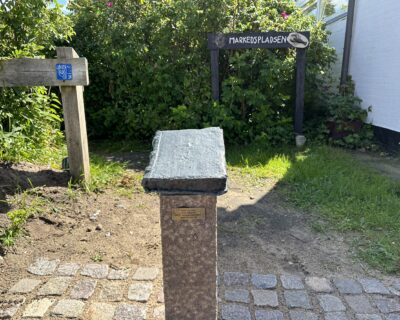

“Knowledge is Power!” by Jens Galschiøt
In keeping with UN Vernde’s goal: Achieving high-quality education for all, reaffirms the belief that education is one of the most powerful and proven engines for sustainable development. This goal is to ensure that all girls and boys complete free primary and secondary schooling by 2030.
Source: UN Global Goals.
ABOUT THE ARTWORK:
Galschiøt presents this piece of art: “Knowledge is power.” Illustrating the UN’s global goals on education through a book is obvious, but nevertheless an ambiguity creeps into the work – Why is the book actually closed? Or perhaps rather: for whom?
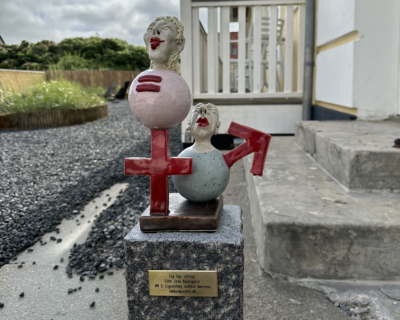

“Take Equality!” by Gitte Jean Kjaergaard
Strengthening women’s rights and opportunities, and greater equality are essential to accelerate sustainable development. Eliminating all forms of discrimination against women and girls is not only a basic human right, but also has a multiplier effect across all other areas of development.
Source: UN Global Goals.
ABOUT THE ARTWORK:
The equality goal is important to Gitte Jean Kjaergaard because, as she says it is one of the goals that can apply to everything. Gitte wants to focus on the fact that we are all equal even though the woman is prominent in this work. The goal is about equality, and for women it is about struggle, education, suffering and abuse. But behind every woman there is a man – or is it the other way around? It is together that we work towards equality.
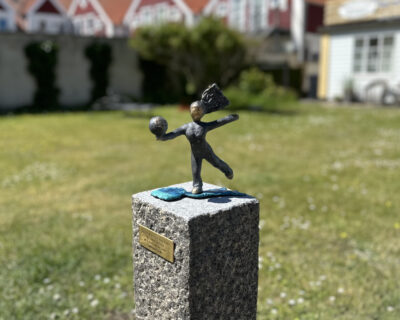

“Together we will! - clean water is essential” by Lene Purkær Stefansen
Water scarcity affects more than 40 percent of the world’s population. It is an alarming number which is expected to increase with the rising global temperatures caused by climate change. In 2011, 41 countries experienced “water stress”. Ten of them are close to exhausting their sources of renewable fresh water and must now rely on non-conventional sources. Drought and desertification are already exacerbating these trends. In 2050, it is expected that one in four will be affected by recurring water shortages.
Source: UN Global Goals.
ABOUT THE ARTWORK:
Lene Stefansen has chosen Sustainable Development Goal No. 6: Clean water and sanitation. She believes that it is crucial that we all take part in the responsibility of looking after our land and our common water resources. Lene encourages us to think about our consumption together and find ways to ensure that there will also be clean water and sanitation for everyone in the world in the future.
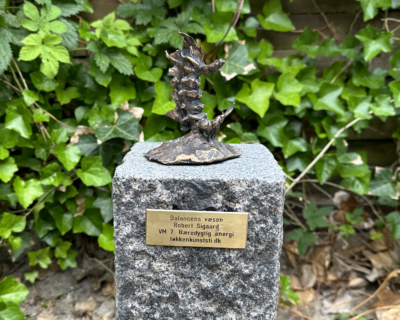

“Essence of Balance” by Robert Sigaard
Between 1990 and 2010, the number of people with access to electricity increased by 1.7 billion, and as the global population continues to grow, so will the demand for cheap energy.
Source: UN Global Goals.
ABOUT THE ARTWORK:
Robert Sigaard is behind Sustainable Development Goal No. 7: Sustainable Energy. The seahorse ensures sustainable balance on the seabed; every little creature in nature is important to maintain the balance. We humans must also find the right balance in our consumption and consider how we use our energy and resources so that we can ensure that the balance is not pushed.
Nature is like the seahorse – both strong and fragile at the same time. We must change the way we manage our energy in order to strengthen and cultivate the essence of balance.
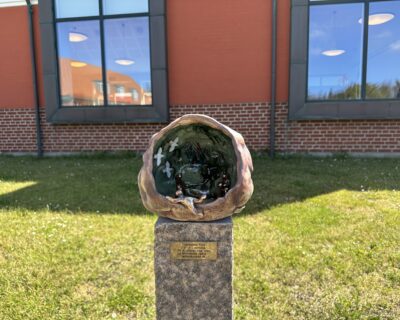
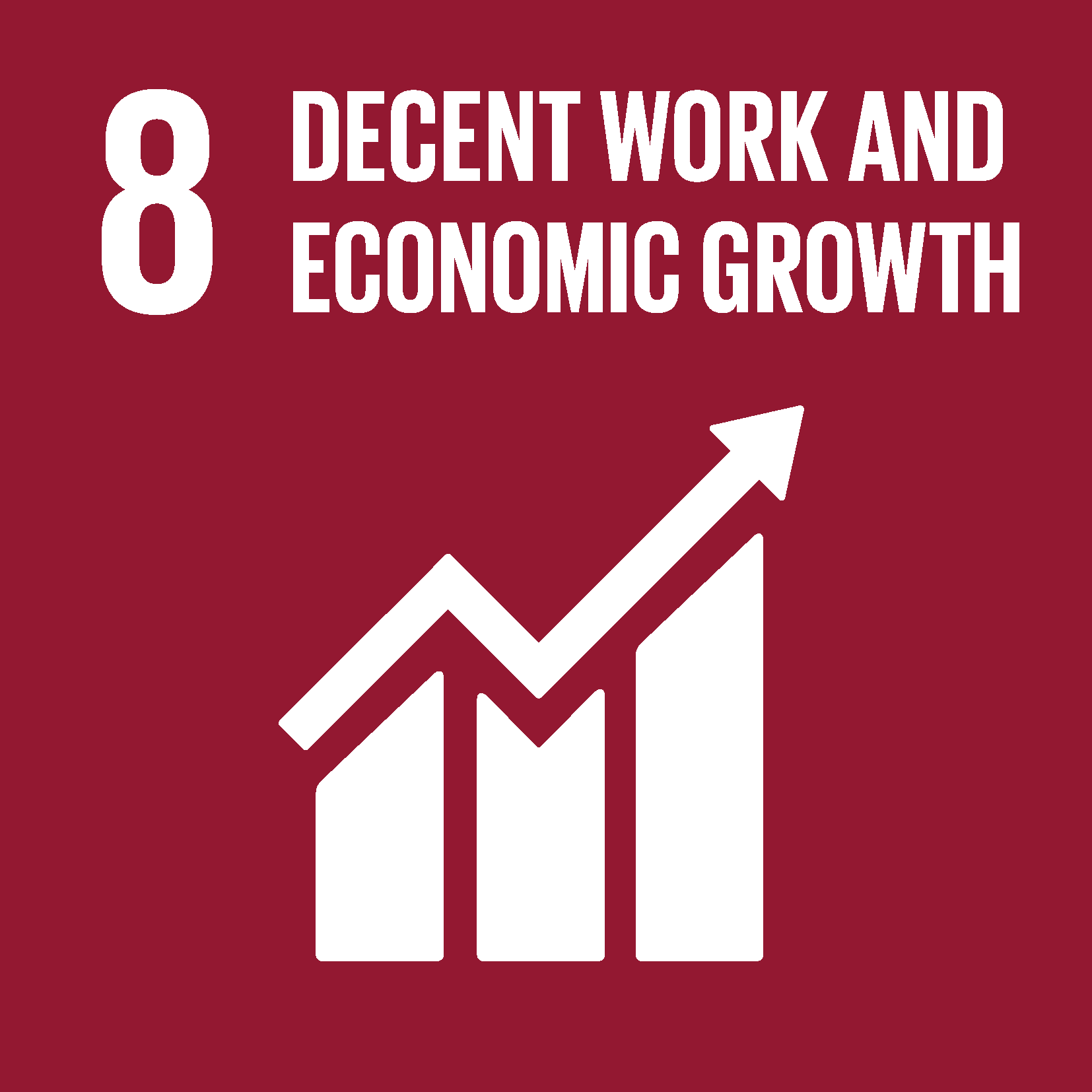
“Cave of safety" by Dorthe Lysemose
In the developing world, the middle class now accounts for more than 34 percent of total employment – a figure that has almost tripled between 1991 and 2015.
Source: UN Global Goals.
ABOUT THE ARTWORK:
Everyone must be able to crawl into the cave of safety. There is no child labor here, only play and learning. There are only decent jobs here, no one is harmed neither physically nor psychologically – everyone is treated equally.
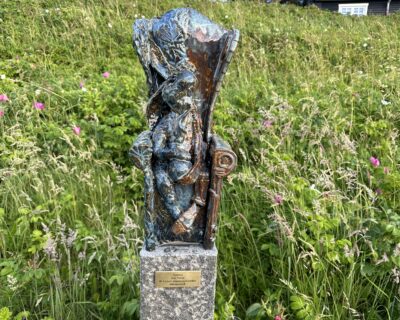

“Harmonoia” by Brian Poulsen
Sustained investments in infrastructure and innovation are decisive driving forces for economic growth and development.
Source: UN Global Goals
ABOUT THE ARTWORK:
Brian Poulsen has worked with the Sustainable Development Goal No. 9 and changed his mind with the goal. Are we sitting back in our armchairs because things are just going too well? Perhaps the time has come for us to take a stand and not let technology take over. We should stop and include sustainability. Consider which innovations are necessary and which we can do without.
Brian Poulsen’s wish is that his figures should make people stop, wonder and consider.
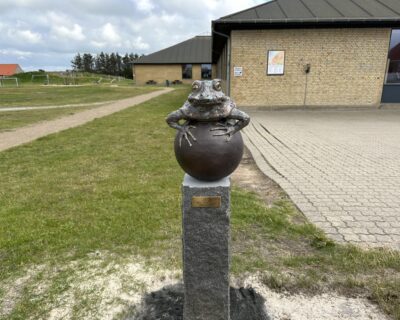
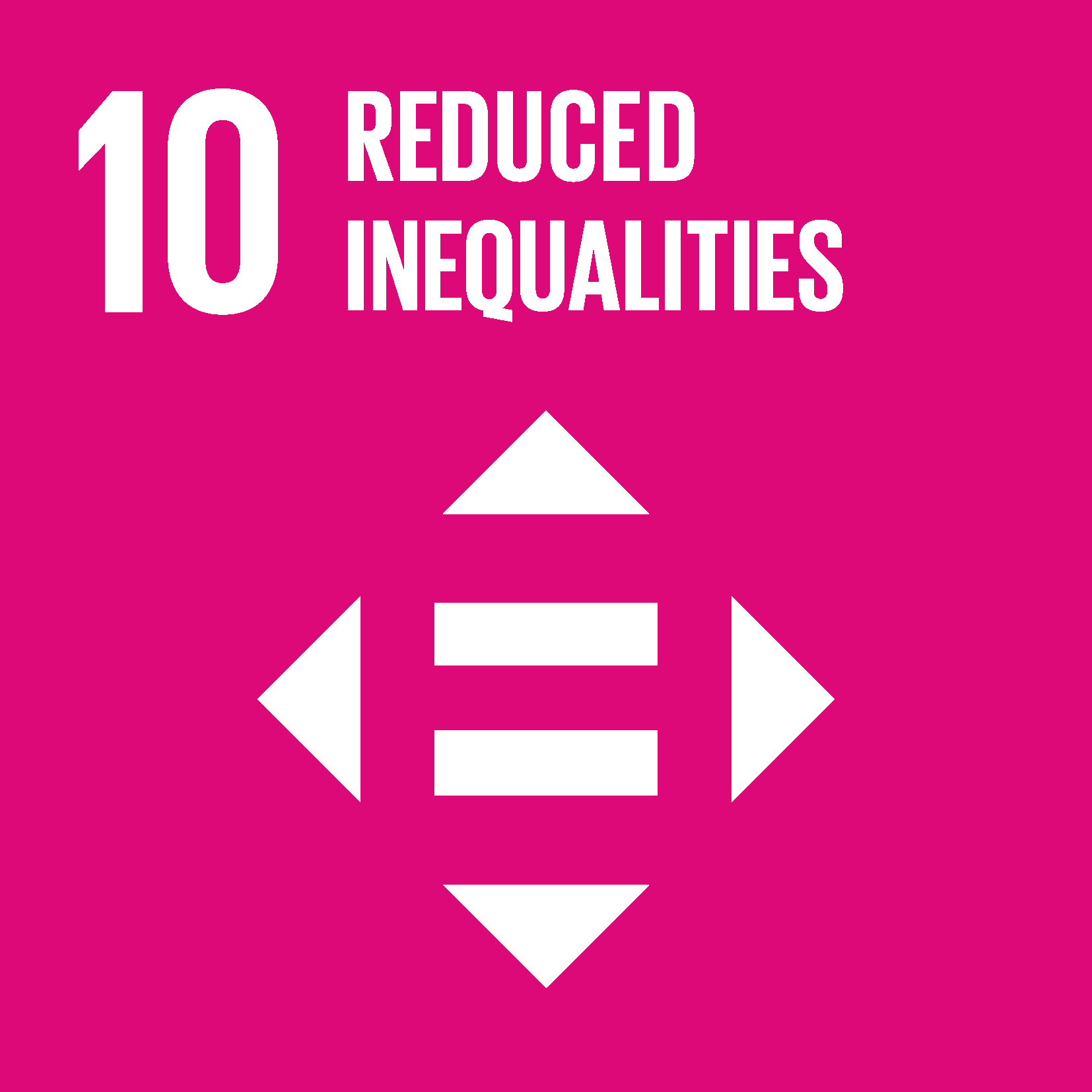
“Lucky Frog” by Rikke Stiig
The richest 10 percent earn up to 40 percent of total global income. The poorest 10 percent earn only between 2 and 7 percent of total global income. Inequality is a global problem that requires global solutions.
Source: UN Global Goals.
ABOUT THE ARTWORK:
In many places in the world the frog is associated with luck, healing, renewal and fertility. It is said that if you kiss enough frogs, sooner or later one of them will turn into a prince. In fairy tales the frog or toad often represents love.
In Feng Shui the three-legged money frog is a symbol of prosperity and wealth as well as luck in money matters. When a coin is placed in the frog’s mouth and the frog is placed with its back to the front door, it is said that money can easily flow into your home. It takes care of the money you already have and helps you grow your finances.
“Lucky Frog” is a three-legged toad that will symbolize “Less inequality in the world.” Lucky Frog doesn’t have a gold coin in its mouth, but it has real gold in its eyes, where you can also see the sign “=” for goal no. 10 in the UN’s global goals.
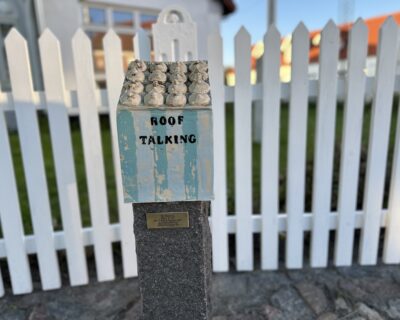
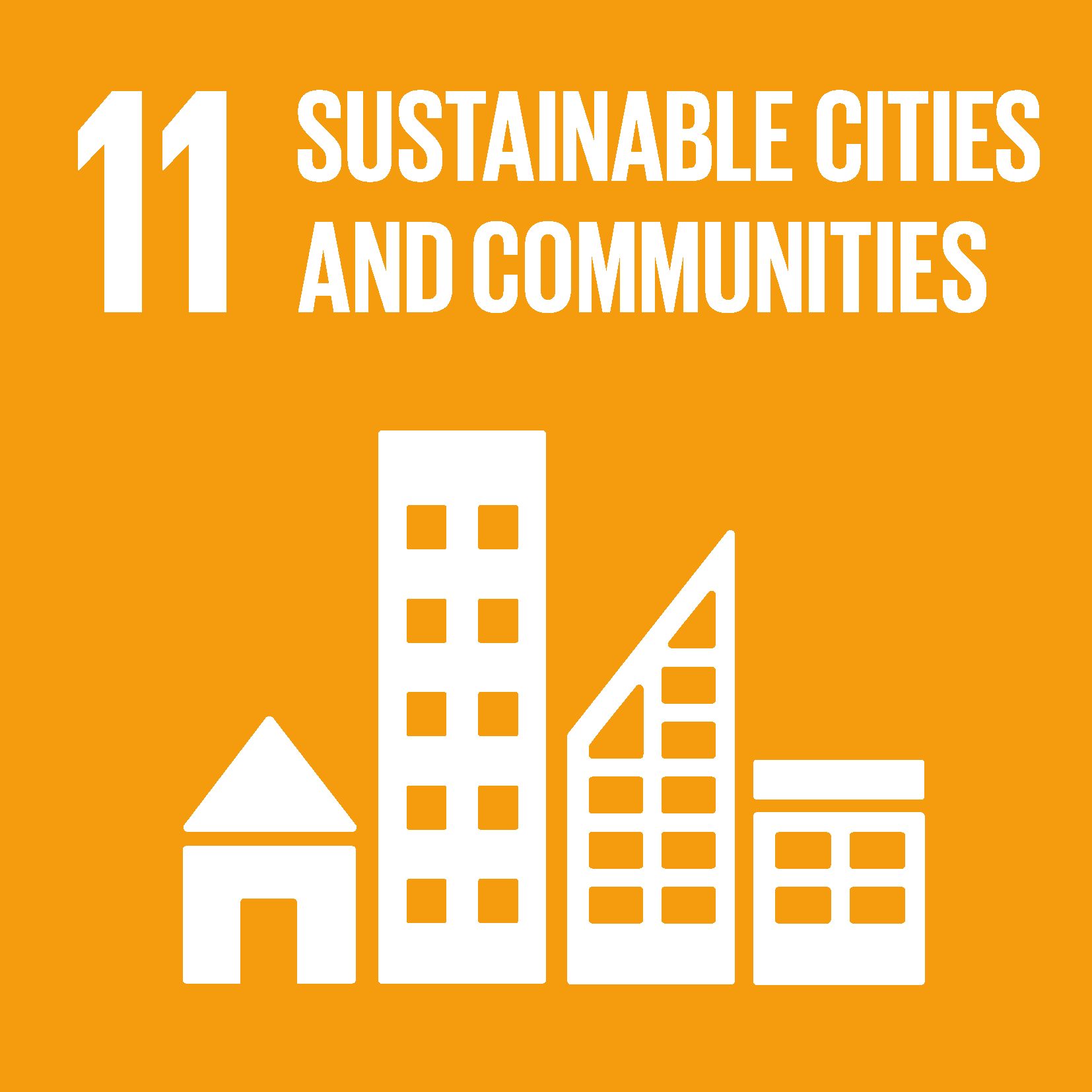
“Rooftalking” by Nina Friis
More than half of the world’s population now lives in urban areas. Sustainable development cannot be achieved if we do not change the way we build and manage our urban spaces.
Source: UN Global Goals
ABOUT THE ARTWORK:
Nina Friis tells that she would like to symbolize the Sustainable Development Goal No. 11 with many people who must help set the agenda for our environment, and that for her it is the most important thing that we must stop the negative impact on the environment. She symbolizes this with a house with a roof of people looking up to illustrate that we must discuss together what we want our urban environment to contain.


“Dodo” by Helle Rask Crawford
Economic growth and sustainable development require us to reduce our footprint on nature as soon as possible. Halving global food waste per capita at retailer and consumer level is important to create more efficient production methods and supply chains.
UN Global Goals
ABOUT THE ARTWORK:
The sculpture for Goal 12 depicts a Dodo. On the Dodo’s back stands a little girl looking through a magnifying glass. The dodo was a metre-high bird from Mauritius, first described in 1598. It lived on fruits and nuts, could not fly and built its nest on the ground. Humans hunted it, importing rats, cats, pigs and dogs to eat its eggs. The bird was already extinct in 1680.
The dodo is a glaring example of how humans can destroy an environment in a short time and contribute to the extermination of species. The little girl on the Dodo’s back symbolizes the hope that future generations will be able to live in harmony with nature. The magnifying glass represents the scientific lens through which the mistakes of the past are studied, the mirror we hold up to ourselves, and the prism through which we look toward the future and the hope of a better world.
Recently, researchers have set out to recreate the Dodo from preserved DNA. Maybe the Dodo can return to Mauritius in the future?
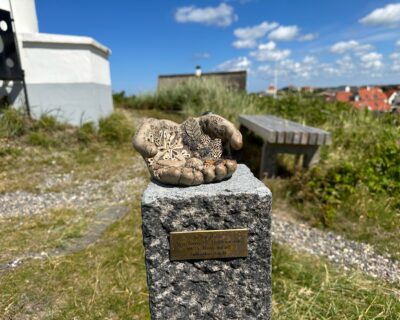

“In Our Hands” by Lisa Stevens
All countries in the world can see the drastic consequences of climate change. Emissions of greenhouse gases continue to rise, and emissions today are more than 50 percent higher than 1990 levels.
Source: UN Global Goals.
ABOUT THE ARTWORK:
“In our hands”: We all have the power to do something for this world. We don’t need expensive, manicured gardens and overseas flights; we have everything we need on our doorstep even if we live in the city. Taking an interest in the wildlife around us benefits everyone and everything.
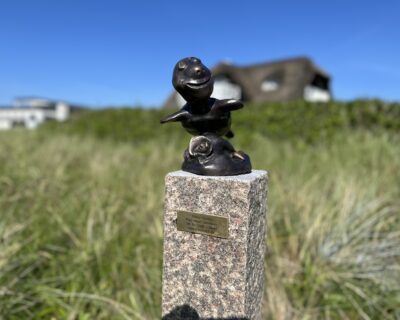

“Happy Ocean” by Max Højer Jacobsen
The livelihoods of over three billion people depend on the biodiversity in marine and coastal areas. But today there is overfishing by around 30 percent, which is far above the level at which fish stocks can reproduce sustainably.
Source: UN Global Goals
ABOUT THE ARTWORK:
The sculpture “Happy Ocean” is based on Sustainable Development Goal No. 14 about “Life in the sea.” With the artist’s usual humorous approach the work shows that we must protect the sea if we also want to meet sea turtles, corals and other wonderful creatures in the long run. It looks so beautifully out over the sea, where it belongs, and reminds us to take care of all living things in the sea.
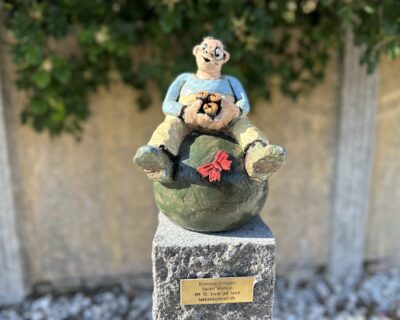
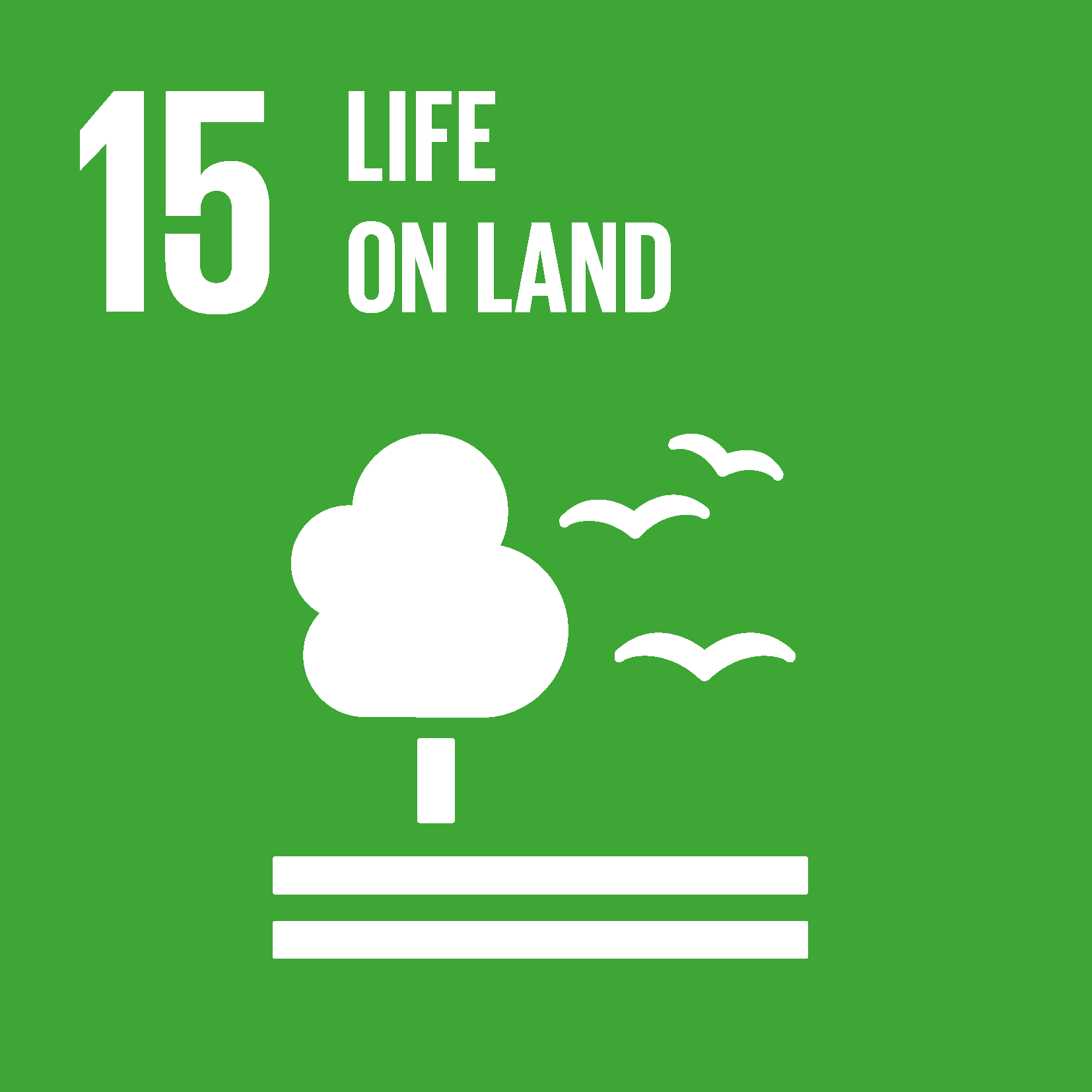
“The Flower Boy” by Søren Wullum
Our lives are as dependent on the land as they are on the sea for our nutrition and livelihood. Forests cover 30 percent of the Earth’s surface and are vital habitats for millions of species, and important sources of clean air and water.
Source: UN Global Goals
ABOUT THE ARTWORK:
Søren Wullum finds inspiration for his works and titles in the universe of the many paradoxes of everyday life and the lovely biases we all contain, mixed with a good dose of humour. Smiling and laughing together is a gift between people. The sculpture “The Flower Boy” symbolizes the symbiosis between man and nature. We must take care of each other. This is how Sustainable Development Goal No. 15 can be described in a nutshell.
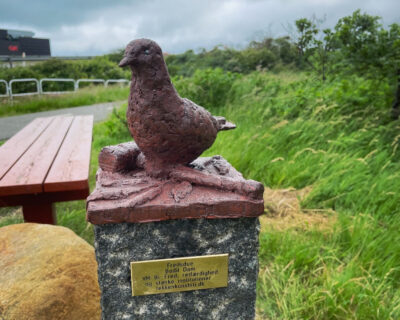

“Dove of Peace” by Bodil Dam
We live in a world that is increasingly divided. Some regions enjoy sustained peace, security and prosperity, while others are plagued by seemingly endless cycles of conflict and violence. This is by no means inevitable and must be resolved.
Source: UN Global Goals
ABOUT THE ARTWORK:
Bodil Dam has interpreted Sustainable Development Goal No. 16 by creating a sculpture of a dove of peace sitting on a judge’s gavel which rests on an olive branch. These elements symbolize peace and justice.
The dove of peace sits beautifully at the edge of a clearing by the Bunker path in Løkken.
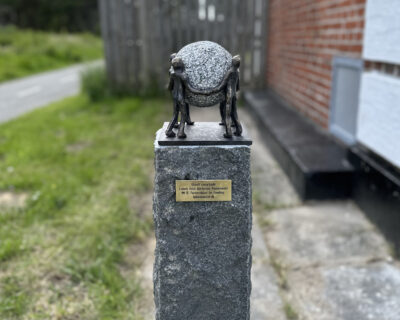
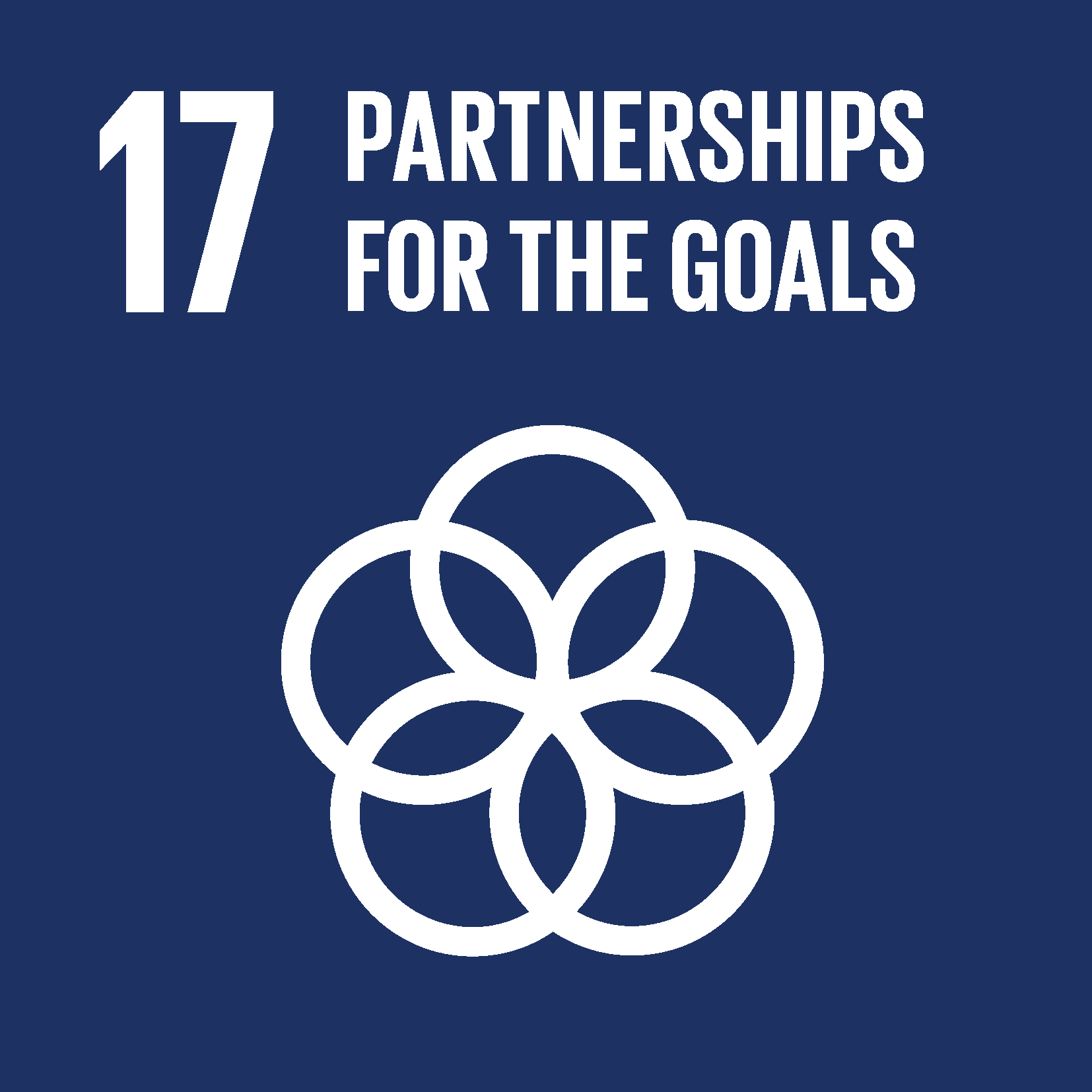
“Global cooperation” by Lisbeth Holst Gundersen
The world goals for sustainable development can only be realized through strong global commitment and cooperation. The world today is more closely connected than ever before. Better access to technology and knowledge is an important way to share ideas and promote innovation.
Source: UN Global Goals
ABOUT THE ARTWORK:
A completely round stone – our globe, people holding hands and lifting in a crowd.
To that extent, Lisbeth Holst Gundersen has created a work that visualizes the intention behind Sustainable Development Goal No. 17, “Partnerships for Action.” For cooperation, community, holding hands and lifting together, globally, is what is needed to achieve our World Goals and create a sustainable future.
How can you help achieve our Global Goals?
